T

Content
Welcome to the Club of Amsterdam Journal.
The Future Now Show: Wearable technology for breast cancer patients with Victor Portes hosted by Miss Metaverse
Breast Cancer has a massive impact on a woman’s physical, psychological, social-cultural economical well-being. This extends to their families and in some cases, to entire communities. Continuous research and development of materials and technologies include wearable technology, artificial intelligence, 3D scanning and 3D printing solutions forthe purpose of realizing external customized breast prosthesesthat provide comfort, functionality and their personal lifestyle.
Felix B Bopp, Founder & Chairman
How to make smart cities human again
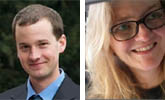
By Nick Malleson, Associate Professor of Geographical Information Systems, University of Leeds & Alison Heppenstall, Professor in Geocomputation, University of Leeds
Huge quantities of networked sensors have appeared in cities across the world in recent years. These include cameras and sensors that count the number of passers by, devices to sense air quality, traffic flow detectors, and even bee hive monitors. There are also large amounts of information about how people use cities on social media services such as Twitter and foursquare.
Citizens are even making their own sensors – often using smart phones – to monitor their environment and share the information with others; for example, crowd-sourced noise pollution maps are becoming popular. All this information can be used by city leaders to create policies, with the aim of making cities “smarter” and more sustainable.
But these data only tell half the story. While sensors can provide a rich picture of the physical city, they don’t tell us much about the social city: how people move around and use the spaces, what they think about their cities, why they prefer some areas over others, and so on. For instance, while sensors can collect data from travel cards to measure how many people travel into a city every day, they cannot reveal the purpose of their trip, or their experience of the city.
With a better understanding of both social and physical data, researchers could begin to answer tough questions about why some communities end up segregated, how areas become deprived, and where traffic congestion is likely to occur.
Difficult questions
Determining how and why such patterns will emerge is extremely difficult. Traffic congestion happens as a result of personal decisions about how to get from A to B, based on factors such as your stage of life, your distance from the workplace, school or shops, your level of income, your knowledge of the roads and so on.
Congestion can build locally at pinch points, placing certain sections of the city’s transport networks under severe strain. This can lead to high levels of air pollution, which in turn has a severe impact on the health of the population. For city leaders, the big question is, which actions – imposing congestion charges, pedestrianising areas or improving local infrastructure – would lead to the biggest improvements in both congestion, and public health.

The irony is, although modern technology has the power to collect vast amounts of data, it doesn’t always provide the means to analyse it. This means that scientists don’t have the tools they need to understand how different factors influence the way cities function and grow. Here, the technique of agent-based modelling could come to the rescue.
The simulated city
Agent-based modelling is a type of computer simulation, which models the behaviour of individual people as they move around and interact inside a virtual world. An agent-based model of a city could include virtual commuters, pedestrians, taxi drivers, shoppers and so on. Each of these individuals has their own characteristics and “rules”, programmed by researchers, based on theories and data about how people behave.
After combining vast urban datasets with an agent-based model of people, scientists will have the capacity to tweak and re-run the model, until they detect the phenomena they’re wanting to study – whether it’s traffic jams or social segregation. When they eventually get the model right, they’ll be able to look back on the characteristics and rules of their virtual citizens, to better understand why some of these problems emerge, and hopefully begin to find ways to resolve them.
For example, scientists might use urban data in an agent-based model to better understand the characteristics of the people who contribute to traffic jams – where they have come from, why they are travelling, what other modes of transport they might be willing to take. From there, they might be able to identify some effective ways of encouraging people to take different routes or modes of transport.
Seeing the future
Also, if the model works well in the present time, then it might be able to produce short-term forecasts. This would allow scientists to develop ways of reacting to changes in cities, in real time. Using live urban data to simulate the city in real-time could help to inform the managers of key services during periods of major disruption, such as severe weather, infrastructure failure or evacuation.
Using real-time data adds another layer of complexity. But fortunately, other scientific disciplines have also been making advances in this area. Over decades, the field of meteorology has developed cutting-edge mathematical methods, which allow their weather and climate models to respond to new weather data, as they arise in real time.
There’s a lot more work to be done before these methods from meteorology can be adapted to work for agent-based models of cities. But if they’re successful, these advancements will allow scientists to build city simulations which are driven by people – and not just the data they produce.
China’s Demography Challenge
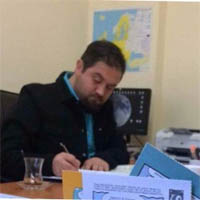
by Miraç Yazici, Intern at Copenhagen Institute for Futures Studies, Nevsehir, Turkey
China is the most populous country in the World, at least for now. India and China are expected to have nearly a population of 1.44 billion each, by 2024, according to UNPD forecasts. By the 1970s, China was facing food and housing shortages and in 1979, decided to limit couples to have only one child and sustained this rule until 2016. Adopting one-child policy created drastic demographic imbalances between old and young population, also between men and women that it could take decades to return to normal.
Less babies and more singles
As a result of 35 years of the one-child policy, the country has an exceptionally low fertility rate with the sex ratio at birth for every 100 girls to 114 in 2015 according to national statistics. On the other hand, China’s singles population is increasing, it has reached 200 million. The proportion of single men and women within the whole population increased from 6 percent in 1990 to 14.6 percent in 2013. In 2015, It is projected that there won’t be enough brides for almost a fifth of males born today in China, by 2035. Over time, an increase in the number of single people can lead to an aging population and a decrease in the birth rate. In 10-20 years, China might face with a decreasing number of working-age people and the problem of maintaining pensions and pension insurance will arise according to Zhang Ning, an economics expert at the Chinese Academy of Social Sciences.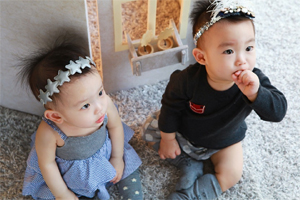
Two-child policy: First Outcomes
China has changed its rules to allow all families to have two children in 2016, after 35 years of one-child policy rule. The new policy is widely regarded as a countermeasure to cope with low fertility rates and the country’s rapidly aging population, but it is highly uncertain whether it will, in fact, positively affect China’s fertility rate.
In 2016, there was an increase of newborns more than 2 million compared with 2015. But those figures fell short of what policy makers expected. The one-child years left social scars: Many couples aren’t convinced that two children are better than one child.
New Approaches for the challenge
There is an extraordinary approach practising to increase fertility rate in China. Communist Youth League organises blind date matchmaking activities across China to help young people find the right partner. What’s more, other government bodies such as labor unions and women’s federations also plays cupid in China. Encouraging fertility has become common in many sectors of Chinese society. For instance, many television stations are making efforts to create a climate of respect for families and fertility, as illustrated by television programs on CCTV’s annual Spring Festival Gala.
The Future Now Show
Every month we roam through current events, discoveries, and challenges – sparking discussion about the connection between today and the futures we’re making – and what we need, from strategy to vision – to make the best ones.
Shape the future now, where near-future impact counts and visions and strategies for preferred futures start.
Do we rise above global challenges? Or do we succumb to them? The Future Now Show explores how we can shape our future now – where near-future impact counts. We showcase strategies and solutions that create futures that work.
Every month we roam through current events, discoveries, and challenges – sparking discussion about the connection between today and the futures we’re making – and what we need, from strategy to vision – to make the best ones.
Wearable technology for breast cancer patients
with
Victor Portes
hosted by
Miss Metaverse
Breast Cancer has a massive impact on a woman’s physical, psychological, social-cultural economical well-being. This extends to their families and in some cases, to entire communities. Continuous research and development of materials and technologies include wearable technology, artificial intelligence, 3D scanning and 3D printing solutions forthe purpose of realizing external customized breast prosthesesthat provide comfort, functionality and their personal lifestyle.
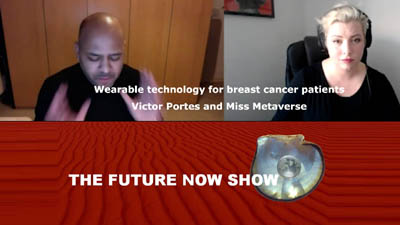
Credits
Victor Portes, Chairman at STICHTING FIGURA NOVA FOUNDATION, the Netherlands
www.figuranova.foundation
Katie Aquino, aka “Miss Metaverse”, Futurista™, USA
www.facebook.com/missmetaverse
Powering Businesses with Space Data
The European economy is powered by space, so you might already be considering how to use it in your business. At ESA Business Applications we’ve been driving change across the world for years, and our network continues to grow. We want you to be a part of that. We have invested an average of half a million euros in more than 500 businesses across Europe, supporting them in leveraging space in commercial ventures. And it goes way beyond the money. We’ll set you up with a dedicated consultant, access to our global network of experts, investors and incubators, a collection of space resources and a mark of credibility that’ll propel your business well beyond its launch. What will you build with the combined resources of space at your fingertips?
Find out about our Industry 4.0 and High Value Manufacturing Kick-Start Activities:
https://business.esa.int/funding/invitation-to-tender/industry-40
Find out more about our funding schemes here: https://business.esa.int/funding-schemes https://business.esa.int/funding-schemes
News about the Future
Engineers create plants that glow
Imagine that instead of switching on a lamp when it gets dark, you could read by the light of a glowing plant on your desk.
MIT engineers have taken a critical first step toward making that vision a reality. By embedding specialized nanoparticles into the leaves of a watercress plant, they induced the plants to give off dim light for nearly four hours. They believe that, with further optimization, such plants will one day be bright enough to illuminate a workspace.
“The vision is to make a plant that will function as a desk lamp — a lamp that you don’t have to plug in. The light is ultimately powered by the energy metabolism of the plant itself,” says Michael Strano, the Carbon P. Dubbs Professor of Chemical Engineering at MIT and the senior author of the study.

Atlas of Sustainable Development Goals 2017: From World Development Indicators
With over 150 maps and data visualizations, the new publication discusses measurement issues, and charts the progress societies are making towards the 17 Sustainable Development Goals.
Holo
We are a community of passionate humans building a distributed cloud, owned and run by users like you and me.
Holo provides a way to unleash the enormous idle capacity in everyone’s computers. This gives us the power to build vibrant cloud hosting communities that will challenge how the Internet monopolies control our data and our interactions. Holo offers each of us the ability to participate by sharing, earning, and building the future of the web.
When the gift you wish to share with the world is a decentralized mode of measuring the subtlest streams of value; river, rain, and tidepool metaphors begin to take on more meaning. Eric Harris-Braun, Fernanda Ibarra, and Art Brock’s intuitions about distributed computing and (r)evolutionary human collaboration became a rich floodplain, gathering together techno-culture enthusiasts, activists, media theorists, healers, next economy geeks, artists, and leading thinkers in collective intelligence. Some were in the business of manifesting social entrepreneurship. Others were pursuing their crafts. A few were furthering their studies. Each effort was a steady flow, chipping away the same myth, layered in centuries of thick sediment: humans function best when responding to a central authority-from-above, whether in governments, schools, businesses, or in our increasingly networked digital lives.
A year before the financial crisis of 2008 and the subsequent rise of Bitcoin and other cryptocurrency projects, many of the Holo team began dreaming, together as part of the MetaCurrency Project, or separately, driving deep explorations in work and life, of new modes of coordinating and new tools to increase our capacity to affect and be affected by one another. In 2018 we proudly break the levee, bringing to bear a concerted groundswell from our robust team of communicators, programmers, strategists, and artists. The Holo project was created to bring the benefits of distributed apps to anyone with a web browser. Casting light on the abyssal zones of our computational culture, we aim to redistribute the wealth and health made possible by our mounting interconnectivity.
Recommended Book

The Silent Intelligence – The Internet of Things
by Daniel Kellmereit, Daniel Obodovski
The Silent Intelligence is a book about the Internet of Things. We talk about the history, trends, technology ecosystem and future of Connected Cities, Connected Homes, Connected Health and Connected Cars. We also discuss the most exciting growth areas for entrepreneurs and venture capital investors. We share exciting stories and unique opinions of more than 30 industry veterans, experts and visionaries from Google, Ericsson, AT&T, Qualcomm, SAP, MIT, Jawbone and many others. We called this book The Silent Intelligence because most of the activity and growth in the space so far has been outside of mainstream visibility. Our aim is to help executives, entrepreneurs, investors and everybody who is interested in this topic, better understand the opportunities and challenges of the Internet of Things. We also hope that the new growth opportunities discussed in this book will be as exciting to you as they are to us.
The World In 2050 The Real Future Of Earth
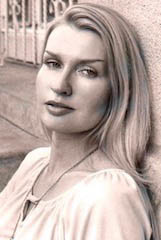
by Mara Lemanis
Though The Law of Excluded Middle claims that two distinct states can’t co-exist in the same time and space, in fact our minds often do battle with a state of cognitive dissonance.
If one is striving for little more than the acquisition of power, one’s mind will find a fairly straightforward path toward cognitive consistency. But when cultures seek an accord between each individual’s inner meanings and the social midst through which those meanings ripen, mankind needs supple skills to map a steady path.
This is no different from how we all wend our way through life. Like people walking between tall hedges in a maze, we tread in the eye of contradictions.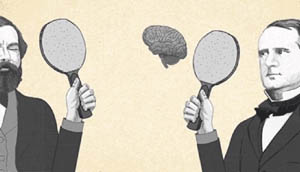
In a famous quote F. Scott Fitzgerald once said, “The test of a first-rate intelligence is the ability to hold two opposed ideas in the mind at the same time, and still retain the ability to function.”
It isn’t really a matter of holding ideas like galloping horses, sweating to rein them in so they don’t fling the rider into a ditch. If we are aware we know, and if unaware we feel the push and pull of polar opposites.
To confront this duality means to come up against the age-old divisions:
between reason and emotion;
between individual and community;
between material and spiritual;
between life and death.
Except those times when we’re particularly stressed or under siege from painful trials, these oppositions don’t cause strife. We typically acknowledge them through irony-“I’m proud of my humility”…or, “As I’m a saint I see the devil in your heart.” More simply put, we incorporate the polarities.
Attempting to prevent disputes and enmities, cultures seek to collaborate. Yet despite its goodwill motives, each community encounters contradictions-between advocacy and self-defense; prowess and deficiency; business zest and public dearth.
The mind can be trained to hold most attitudes in harmony. “I love how you boost me” vs. “I hate how you hype me”; “I’m proud of my money” vs. “I’m ashamed of what I do for it” are oppositions susceptible of binding together to streamline goals and focus. Finding cognitive consistency is a normative act.
It takes a balancing act-accommodation — to neutralize the force in each polarity. But the best and brightest functions of our brain can turn oppositions into unities.
If this sounds like a dialectical turn, it is still not Hegelian. Yet a synthesis is created. That synthesis is less a climax than a fusion, and it is a fusion that heals.
Because whatever we believe to be responsible for fulfilling this valued equilibrium, the impact revitalizes. We may believe it is a series of biological moments-neural firings and integration — or we may believe it is a spiritual gift, an intercession beyond clinical analysis.
Regardless, it works. It only seems to betray us at times of deep emotional turmoil or a catastrophic event that thrusts us out of our reliable orbit.
The sudden imminence of death is such an event. It can overwhelm us. Though we float in the eye of the life-death spectrum, at once absorbing both survival and extinction, the alarming demise of someone close — a sudden forecast of our own end — throws us way off course.
We may be hurled so far that it will take some wandering — maybe the balm of therapy and even medication, a suspension of regular activity — before we’re able to return.
But when we do return, we come back redeemed by that which integrated us again and made us whole. We can call it a chemical-biological rescue, or we can say our spirit intervened; that God breathed into us.
In the final analysis even if we contend that our neurons found a way to reassemble and point out the quick of our path again, a spiritual impulse, like a law of fusion, could be stamped into those neurons. It’s not impossible to state that they have always been and always are inspired.
The art in our personal balance and the stability of our culture is to stop the tortuous stumbling away from our core path and let our minds re-mind us we must stop obsessing over one polarity or the other-cease fixating on death but no less on life.
In admitting the contradiction and letting our neural grid act as our spiritual guide, we are able to submit and reconcile ourselves. When we keep the contradiction constant, we keep duality at bay. Opposing forces cannot tear or break us. We are not at the mercy of emotional storms.
And through that constant within ourselves and our extended community we can once more be joined, at one, made whole.
Futurist Portrait: Nancy Giordano
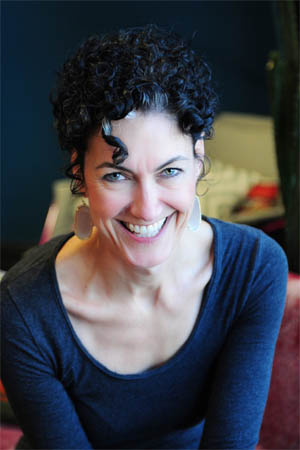
Nancy (Patierno) Giordano
Strategic Futurist + Gatherer + Speaker
Strategic Futurist | Corporate Strategist | Event Catalyst | Keynote Speaker
Described as endlessly optimistic, Nancy is a strategic futurist with a drive to help enterprise organizations and visionary leaders transform to meet the escalating expectations ahead. Recognized as one of the world’s top female futurists, she has spent her career building, shaping and evolving a portfolio of $50 billion worth of major global brands with her unique abilities to sense and synthesize the shifts ahead and to guide those ready to build more relevant and sustainable solutions for us all.
With an early career at several of the most influential ad agencies in NY, Chicago, and LA, Nancy has spent the past 10 years as Founder/CEO of Play Big Inc, a strategic inspiration company, applying her broad understanding of the intense cultural and technological shifts we’re facing. Her extensive knowledge of the drivers shaping our future (and driving business) have guided transformation projects with The Coca Cola Company, Brinker International, Sprint, Nestle, Acumen, Energizer, Mercedes Benz and many other Fortune 500 companies. And through keynote talks to CXO leaders in wide range of industries including entertainment, travel, food, business, homebuilding, culture/talent and more.
Diving more deeply into the intersections of tech, business and society, she recently worked to frame the internal culture and talent infrastructure for a provocative artificial intelligence company and currently is producing Gigaom Change, a Leader’s Summit diving into the seven most disruptive technologies for enterprise. She has been ranked as one of the World’s Top Female Futurists (research by Ross Dawson) and was voted 7th Woman of Influence on the Future of Leadership list (Women Speakers Association). She was the first global TEDx licensee and currently leads a youth-led team to produce one of the globe’s largest TEDx events for teens, hosting nearly 1000 annually.
Nancy’s distinctive ability to design meaningful, future-forward solutions and pathways is honed by her active collaboration with idea-centric organizations such as TED, The World Future Society, REX, Voice & Exit, and the newly forming Global Synthesis Network. She partners with (and learns from) many of the most provocative influencers currently building our collective futures — whom she describes as PYNKrs: people you need to know.
Nancy lives in Austin with three fast growing, very curly teens and her ideas can be found on her blog Cultural Acupuncture, often featured on The Huffington Post.







Customer Reviews
Thanks for submitting your comment!